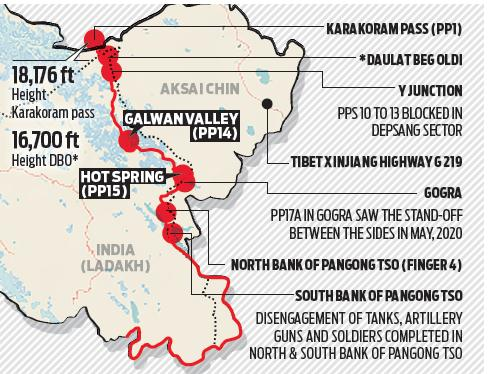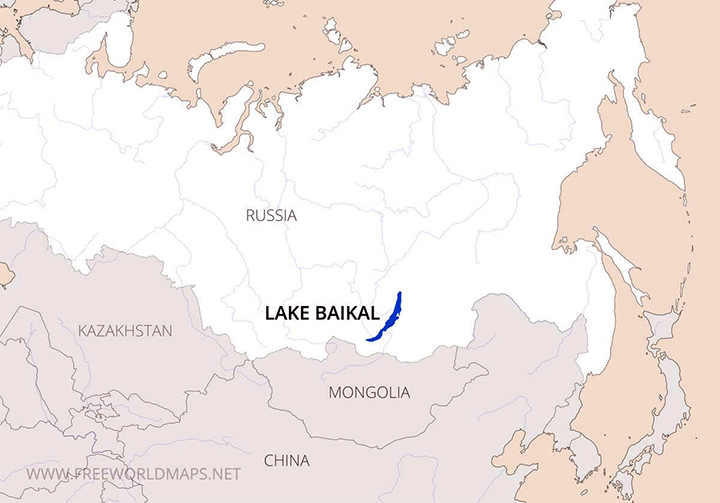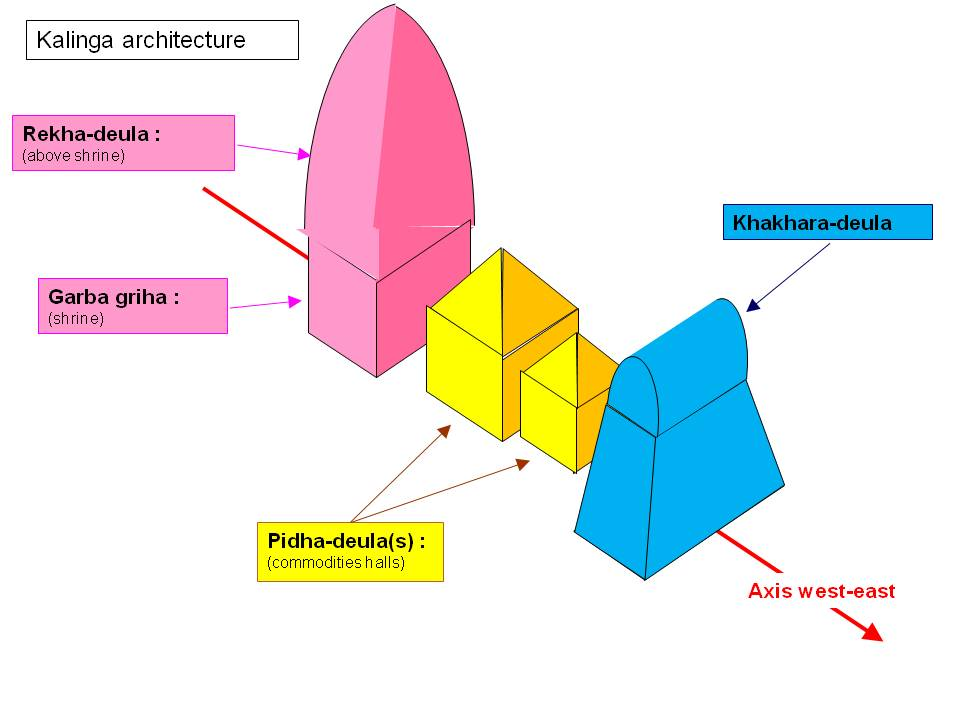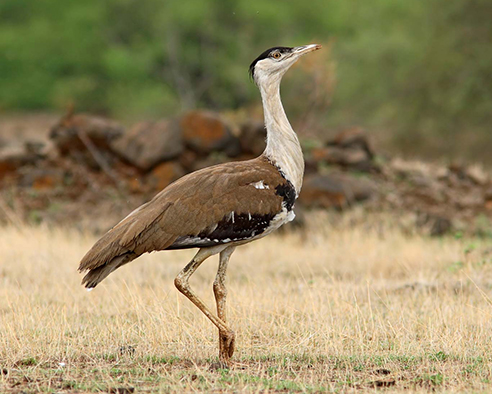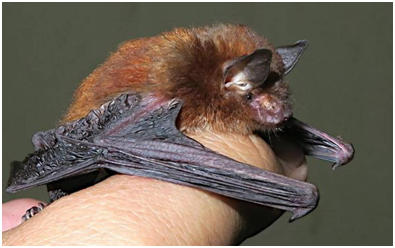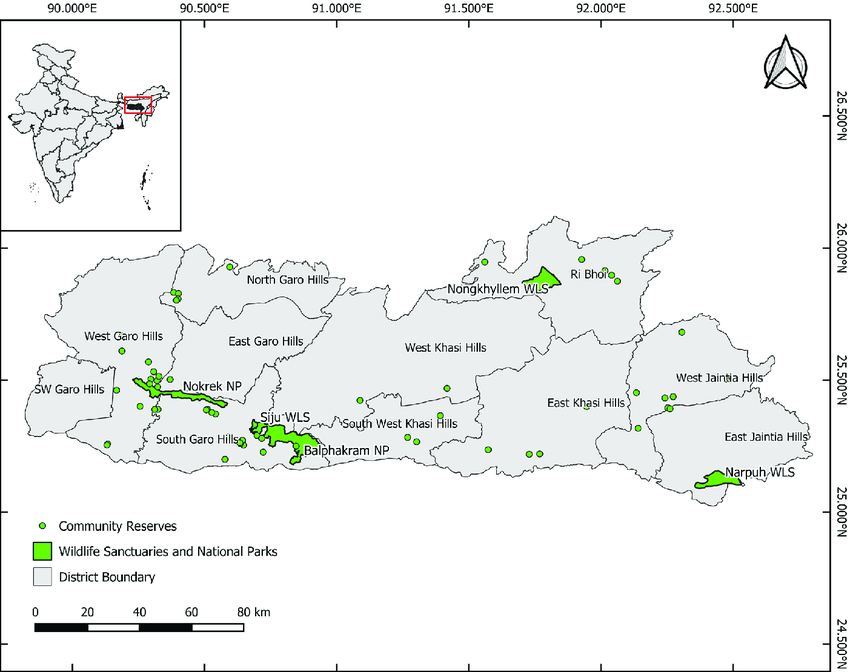International Relations
China Not Leaving Hot Springs & Gogra Post
Why in News
Recently, during the 11th round of discussions between the senior military commanders of India and China to resolve the standoff in eastern Ladakh, China refused to vacate two of the four original friction points.
- At two friction points, Patrolling Point 15 (PP15) in Hot Springs, and PP17A near Gogra Post, China still has a platoon-level strength each, along with vehicles.
- Other two are the Galwan valley and the Depsang plains.
Key Points
- Patrolling Point 15 and 17A:
- Along the Line of Actual Control (LAC) between India and China, Indian Army has been given certain locations that its troops have access to patrol the area under its control.
- These points are known as patrolling points, or PPs, and are decided by the China Study Group (CSG).
- CSG was set-up in 1976, when Indira Gandhi was the prime minister, and is the apex decision-making body on China.
- Barring certain areas, like Depsang Plains, these patrolling points are on the LAC, and troops access these points to assert their control over the territory.
- It is an important exercise since the boundary between India and China is not yet officially demarcated.
- LAC is the demarcation that separates Indian-controlled territory from Chinese-controlled territory.
- PP15 and PP17A are two of the 65 patrolling points in Ladakh along the LAC.
- Both these points are in an area where India and China largely agree on the alignment of the LAC.
- PP15 is located in an area known as the Hot Springs, while PP17A is near an area called the Gogra post.
- Location of Hot Springs and Gogra Post:
- Hot Springs is just north of the Chang Chenmo river and Gogra Post is east of the point where the river takes a hairpin bend coming southeast from Galwan Valley and turning southwest.
- The area is north of the Karakoram Range of mountains, which lies north of the Pangong Tso lake, and south east of Galwan Valley.
- Importance:
- The area lies close to Kongka Pass, one of the main passes, which, according to China marks the boundary between India and China.
- India’s claim of the international boundary lies significantly east, as it includes the entire Aksai Chin area as well.
- Hot Springs and Gogra Post are close to the boundary between two of the most historically disturbed provinces (Xinjiang and Tibet) of China.
- The area lies close to Kongka Pass, one of the main passes, which, according to China marks the boundary between India and China.
Pangong Tso lake
- Pangong Lake is located in the Union Territory of Ladakh.
- It is situated at a height of almost 4,350m and is the world’s highest saltwater lake.
- Extending to almost 160km, one-third of the Pangong Lake lies in India and the other two-thirds in China.
Galwan Valley
- The valley refers to the land that sits between steep mountains that buffet the Galwan River.
- The river has its source in Aksai Chin, on China’s side of the LAC, and it flows from the east to Ladakh, where it meets the Shyok river on India’s side of the LAC.
- The valley is strategically located between Ladakh in the west and Aksai Chin in the east, which is currently controlled by China as part of its Xinjiang Uyghur Autonomous Region.
Chang Chenmo River
- Chang Chenmo River or Changchenmo River is a tributary of the Shyok River, part of the Indus River system.
- It is at the southern edge of the disputed Aksai Chin region and north of the Pangong Lake basin.
- The source of Chang Chenmo is near the Lanak Pass.
Kongka Pass
- The Kongka Pass or Kongka La is a low mountain pass over a hill that intrudes into the Chang Chenmo Valley. It is in the disputed India-China border area in Ladakh.
Karakoram Range
- It is also known as Krishnagiri which is situated in the northernmost range of the Trans-Himalayan ranges. It forms India's frontiers with Afghanistan and China.
- It extends eastwards from the Pamir for about 800 km. It is a range with lofty peaks [elevation 5,500 m and above].
- Some of the peaks are more than 8,000 metre above sea level. K2 (8,611 m)[Godwin Austen or Qogir] is the second highest peak in the world and the highest peak in the Indian Union.
- The Ladakh Plateau lies to the north-east of the Karakoram Range.
Science & Technology
Support Centre for Aditya-L1
Why in News
ARIES facility (Aryabhata Research Institute for Observational Sciences) will host the support centre for Aditya-L1 mission, which is due to be launched next year (2022).
- ARIES is an autonomous institute under the Department of Science & Technology and is located in Nainital (Uttarakhand).
Key Points
- About Aditya-L1 Mission:
- It is India’s first scientific expedition to study the Sun. It will be ISRO’s(Indian Space Research Organisation) second space-based astronomy mission after AstroSat, which was launched in 2015.
- ISRO categorises Aditya L1 as a 400 kg-class satellite that will be launched using the Polar Satellite Launch Vehicle (PSLV) in XL configuration.
- It will be inserted in a halo orbit around the L1 ( Lagrangian point 1), which is 1.5 million km from the Earth.
- The space-based observatory will have seven payloads (instruments) on board to study the Sun’s corona, solar emissions, solar winds and flares, and Coronal Mass Ejections (CMEs), and will carry out round-the-clock imaging of the Sun.
- Aditya-L1 Support Centre (ASC):
- The main aim of this centre is to let every researcher in India perform analysis over scientific data obtained from Aditya-L1. It will expand the visibility of Aditya-L1 beyond India at the international level.
- It will host a compendium of the location and duration of different features on the solar surface such as coronal holes, prominences, flares, CMEs and sunspots.
- Continuous monitoring of the location and duration of these features will help in monitoring the Earth directed CMEs and thereby, the space weather.
- Challenges in Launching the Mission:
- The distance of the Sun from Earth (approximately 15 crore kms on average, compared to the only 3.84 lakh kms to the Moon). This huge distance poses a scientific challenge.
- Aditya L1 will have some moving components which increases the risks of collision.
- Due to the risks involved, payloads in earlier ISRO missions have largely remained stationary in space.
- Other issues are the super hot temperatures and radiation in the solar atmosphere.
- However, Aditya L1 will stay much farther away, and the heat is not expected to be a major concern for the instruments on board.
- Importance of Studying the Sun:
- Every planet, including Earth and the exoplanets beyond the Solar System, evolves and this evolution is governed by its parent star.
- Sun affects the weather of the entire system.
- Variations in this weather can change the orbits of satellites or shorten their lives, interfere with or damage onboard electronics, and cause power blackouts and other disturbances on Earth.
- To learn about and track Earth-directed storms, and to predict their impact, continuous solar observations are needed.
- Other Missions to Sun:
- Japan’s Solar-C EUVST: The EUVST (Extreme Ultraviolet High-Throughput Spectroscopic Telescope Epsilon) would be studying the solar wind released by the solar atmosphere, as well as studying how this atmosphere drives solar material eruption.
- NASA’s EZEI Mission: The EZEI (Electrojet Zeeman Imaging Explorer) Mission would study the atmosphere of the earth and electric currents in it, which link the aurora to the magnetosphere.
- NASA’s Parker Solar Probe’s aim is to trace how energy and heat move through the Sun’s corona and to study the source of the solar wind’s acceleration.
- It is part of NASA’s ‘Living With a Star’ programme that explores different aspects of the Sun-Earth system.
- The earlier Helios 2 solar probe, a joint venture between NASA and space agency of erstwhile West Germany, went within 43 million km of the Sun’s surface in 1976.
Sun’s Corona
- Corona is a luminous envelope of plasma that surrounds the Sun and other celestial bodies.
- It is extended to millions of kilometres into space and is commonly seen during a total solar eclipse.
- The corona of the Sun is much hotter than its visible surface.
- The intense temperature of the Sun's corona is due to the presence of highly ionized ions which give it a spectral feature.
Solar Winds and Flares
- The solar wind is a continuous stream of charged particles that flows out of the Sun in all directions.
- The strength of the solar wind varies depending on the activity on the surface of the Sun.
- The Earth is mostly protected from the solar wind by its strong magnetic field.
- However, some types of activity, like solar flares, can cause high energy particles to emit from the Sun which can be dangerous to astronauts and can cause damage to satellites orbiting Earth.
Coronal Mass Ejection
- A Coronal Mass Ejection (CME) is a significant release of plasma and accompanying magnetic field from the solar corona.
- They often follow solar flares and are normally present during a solar prominence eruption.
- Prominences are clouds of incandescent, ionized gas ejected from the Sun's surface.
- The plasma is released into the solar wind, and can be observed in coronagraph imagery.
- An ARIES team has recently developed an algorithm to study the accelerating solar eruptions in the lower corona called CMEs Identification in Inner Solar Corona (CIISCO).
Lagrangian Point 1
- Lagrange Points, named after Italian-French mathematician Josephy-Louis Lagrange, are positions in space where the gravitational forces of a two-body system (like the Sun and the Earth) produce enhanced regions of attraction and repulsion.
- These can be used by spacecraft to reduce fuel consumption needed to remain in position.
- L1 refers to Lagrangian/Lagrange Point 1, one of 5 points in the orbital plane of the Earth-Sun system.
- The L1 point is about 1.5 million km from Earth, or about 1/100th of the way to the Sun.
- A Satellite placed in the halo orbit around the Lagrangian point 1 (L1) has the major advantage of continuously viewing the Sun without any occultation/eclipses.
- The L1 point is home to the Solar and Heliospheric Observatory Satellite (SOHO), an international collaboration project of National Aeronautics and Space Administration (NASA) and the European Space Agency (ESA).
Science & Technology
Baikal-GVD Telescope
Why in News
Russian scientists have launched one of the world’s biggest underwater neutrino telescopes called the Baikal-GVD (Gigaton Volume Detector) in the waters of Lake Baikal, the world’s deepest lake situated in Siberia.
- The construction of this telescope, which started in 2016, is motivated by the mission to study in detail the elusive fundamental particles called neutrinos and to possibly determine their sources.
Key Points
- About Baikal-GVD Telescope:
- It is one of the three largest neutrino detectors in the world along with the IceCube at the South Pole and ANTARES in the Mediterranean Sea.
- GVD is designed to detect high-energy neutrinos that may have come from the Earth’s core, or could have been produced during nuclear reactions in the Sun.
- It will aid scientists’ understanding of the origins of the universe since some neutrinos were formed during the Big Bang, others continue to be formed as a result of supernova explosions or because of nuclear reactions in the Sun.
- About Fundamental Particles:
- The universe is made of some fundamental particles that are indivisible. These particles can be classified into quarks and leptons.
- But this only applies to “normal matter” or the matter that scientists know that 5% of the universe is made up of.
- There has been the discovery of over 12 such quarks and leptons, but three of these (protons, neutrons and electrons) make what is referred to as the building block of life– the atom.
- Protons (carry a positive charge) and neutrons (no charge) are types of quarks, whereas electrons (carry a negative charge) are types of leptons.
- In different combinations, these particles can make different kinds of atoms, which in turn make up molecules that form everything– from a human being, to a mobile phone, a planet, and so on.
- Studying what humans and everything around them is made up of gives scientists a window into understanding the universe a better way.
- The universe is made of some fundamental particles that are indivisible. These particles can be classified into quarks and leptons.
- About Neutrinos:
- Neutrinos (not the same as neutrons) are also a type of fundamental particle.
- Neutrinos belong to the family of particles called leptons, and there are three types of neutrino, i.e. electron-neutrino, muon-neutrino, and tau-neutrino.
- They are the second most abundant particles, after photons, which are particles of light.
- However, they are not easy to catch, this is because they do not carry a charge, as a result of which they do not interact with matter.
- Natural sources of neutrinos include the radioactive decay of primordial elements within the earth, radioactivity in the sun, cosmic interactions in the atmosphere and others.
- One way of detecting neutrinos is in water or ice, where neutrinos leave a flash of light or a line of bubbles when they interact. To capture these signs, scientists have to build large detectors.
Big-Bang Model
- It is a widely held theory of the evolution of the universe.
- Its essential feature is the emergence of the universe from a state of extremely high temperature and density—the so-called big bang that occurred 13.8 billion years ago.
Supernova
- Supernova is a powerful and luminous stellar explosion.
- This astronomical event occurs during the last evolutionary stages of a massive star or when a white dwarf is triggered into runaway nuclear fusion.
Quarks
- Quark is a fundamental constituent of matter and is defined as an elementary particle.
- The quarks combine to produce composite particles called hadrons, the most stable of which are neutrons and protons that are the components of atomic nuclei.
Lepton
- Lepton, any member of a class of subatomic particles that respond only to the electromagnetic force, weak force, and gravitational force.
- They are not affected by the strong force.
- Leptons are said to be elementary particles; and can either carry one unit of electric charge or be neutral.
Indian Heritage & Culture
Lingaraja Temple
Why in News
Recently, the Odisha Government has restricted public entry into the Lingaraj Temple after four sevayats (priests) tested positive for the novel coronavirus.
- In August 2020, the government had decided to give a facelift to the temple, akin to its pre-350-year structural status.
Key Points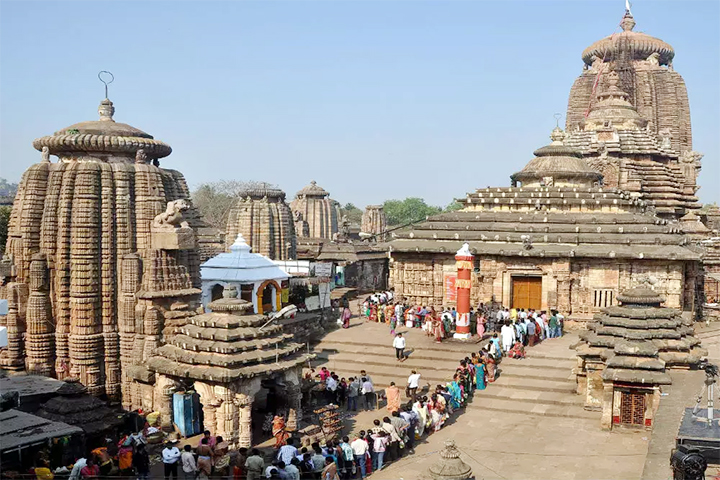
- Lingaraj Temple, built in 11th century AD, is dedicated to Lord Shiva and is considered as the largest temple of the city Bhubaneswar (Odisha).
- It is believed to have been built by the Somvanshi King Yayati I.
- It is built in red stone and is a classic example of Kalinga style of architecture.
- The temple is divided into four sections - Garbha Griha (sanctum sanctorum), Yajna Shala (the hall for prayers), Bhoga Mandap (the hall of offering) and Natya Shala (hall of dance).
- The sprawling temple complex has one hundred and fifty subsidiary shrines.
- Lingaraj is referred to as ‘Swayambhu' – self-originated Shivling.
- Another important aspect of the temple is that it signifies the syncretisation of Shaivism and Vaishnavism sects in Odisha.
- Perhaps the rising cult of Lord Jagannath (considered an incarnation of Lord Vishnu) which coincided with the completion of the Lingaraja Temple had a role to play.
- The presiding deity in the Temple is known as Hari-Hara; Hari denotes Lord Vishnu and Hara meaning Lord Shiva.
- The temple is out of bounds for non-Hindus.
- The other attraction of the temple is the Bindusagar Lake, located in the north side of the temple.
- On the western banks of Bindusagar, lies the garden of Ekamra Van named after the Hindu mythological texts where Bhubaneswar the capital city of Odisha was referred as Ekamra Van or a forest of a single mango tree.
- Other Important Monuments in Odisha:
Kalinga Architecture
- About:
- The Indian temples are broadly divided into Nagara, Vesara, Dravida and Gadag styles of architecture.
- However, the temple architecture of Odisha corresponds to altogether a different category for their unique representations called Kalinga style of temple architecture.
- This style broadly comes under the Nagara style.
- The Architecture:
- In Kalinga Architecture, basically a temple is made in two parts, a tower and a hall. The tower is called deula and the hall is called jagmohan.
- The walls of both the deula and the jagmohan are lavishly sculpted with architectural motifs and a profusion of figures.
- The most repeated form is the horseshoe shape, which has come from the earliest times, starting with the large windows of the chaitya-grihas.
- It is the deula which makes three distinct types of temples in Kalinga Architecture:
- Rekha Deula.
- Pidha Deula.
- Khakhara Deula.
- The former two are associated with Vishnu, Surya and Shiva temples while the third is mainly with Chamunda and Durga temples.
- The Rekha Deula and Khakhara Deula houses the sanctum sanctorum while the Pidha Deula constitutes outer dancing and offering halls.
Biodiversity & Environment
Exotic Animals
Why in News
Recently, the Delhi High Court directed the Centre to take a decision on framing rules to confer protection for exotic animals that are currently not under the purview of the Wildlife (Protection) Act, 1972.
- The court’s order came in response to a petition filed by animal rights group, People for the Ethical Treatment of Animals (PETA) India about the status of a male hippopotamus rescued from the Asiad Circus in Uttar Pradesh.
- Earlier in June 2020, the Ministry of Environment, Forest and Climate Change issued an advisory to streamline and formalise the process of importing live exotic animals.
Key Points
- Exotic Animals:
- The term exotic does not have a set definition but it usually refers to a wild animal or one that is more unusual and rare than normal domesticated pets like cats or dogs.
- These are those species which are not usually native to an area and are introduced to an area by humans.
- Provisions Related to Illegal Trade of Animals:
- Illegally traded exotic animals are confiscated under Section 111 of the Customs Act, 1962 which is read with the provision of the Convention on International Trade in Endangered Species of Wild Fauna and Flora (CITES) and the Foreign Trade Policy (Import-Export Policy) of India.
- CITES is an international agreement between governments. Its aim is to ensure that international trade in specimens of wild animals and plants does not threaten the survival of the species. India is a party to it.
- Also, Sections 48 and 49 of the Wildlife Protection Act, 1972 prohibit trade or commerce in wild animals, animal articles or trophies.
- Illegally traded exotic animals are confiscated under Section 111 of the Customs Act, 1962 which is read with the provision of the Convention on International Trade in Endangered Species of Wild Fauna and Flora (CITES) and the Foreign Trade Policy (Import-Export Policy) of India.
Hippopotamus
- About:
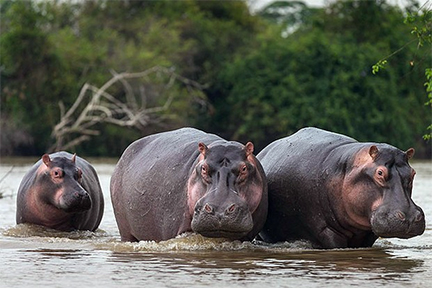
- Hippopotamus, also called hippo or water horse, is an amphibious African ungulate mammal.
- It is considered to be the second largest land animal (after the elephant).
- Hippos are well adapted to aquatic life. The ears, eyes, and nostrils are located high on the head so that the rest of the body may remain submerged.
- Hippopotamuses were extinct in northern Africa by 1800 and south of Natal and the Transvaal by 1900. They are still fairly common in East Africa, but populations continue to decrease continent wide.
- Scientific Name:
- Hippopotamus amphibius.
- Threats:
- Human-wildlife conflict and habitat encroachment.
- Often killed for their meat under the guise of protection, and they are also hunted for hippo fat and their ivory canine teeth.
- Protection Status:
- IUCN Red List: Vulnerable
- CITES: Appendix Ill
Biodiversity & Environment
Great Indian Bustards
Why in News
Recently, a group of hunters shot down two Great Indian Bustards (GIBs) in a protected area of southern Punjab’s Cholistan in Pakistan.
Key Points
- About:
- The Great Indian Bustard (GIB), the State bird of Rajasthan, is considered India’s most critically endangered bird.
- It is considered the flagship grassland species, representing the health of the grassland ecology.
- Its population is confined mostly to Rajasthan and Gujarat. Small populations occur in Maharashtra, Karnataka and Andhra Pradesh.
- The bird is under constant threats due to collision/electrocution with power transmission lines, hunting (still prevalent in Pakistan), habitat loss and alteration as a result of widespread agricultural expansion, etc.
- Protection Status:
- International Union for Conservation of Nature Red List: Critically Endangered
- Convention on International Trade in Endangered Species of Wild Fauna and Flora (CITES): Appendix1
- Convention on Migratory Species (CMS): Appendix I
- Wildlife (Protection) Act, 1972: Schedule 1
- India’s Concerns:
- The grassland habitat in the Cholistan desert, where the GIBs were killed, is very similar to the habitat in Rajasthan’s Desert National Park (DNP), where the GIB’s last remnant wild population is found.
- DNP is situated near the towns of Jaisalmer and Barmer, forming a part of the mighty Thar desert.
- It was declared as a National Park in 1981 to protect the habitat of the Great Indian Bustard.
- As Rajasthan shares the international border with Pakistan's Sindh and Punjab provinces, the birds will become an easy prey for the gun-toting poachers there.
- The hunting of the rare bird will not only drastically reduce India’s GIB population, but will also affect the desert ecosystem.
- The grassland habitat in the Cholistan desert, where the GIBs were killed, is very similar to the habitat in Rajasthan’s Desert National Park (DNP), where the GIB’s last remnant wild population is found.
- Government’s Initiatives:
- It is kept under the species recovery programme under the Integrated Development of Wildlife Habitats of the Ministry of Environment, Forests and Climate Change (MoEFCC).
- The MoEFCC has also launched a program called ‘Habitat Improvement and Conservation Breeding of Great Indian Bustard-An Integrated Approach’.
- The objective of the programme is to build up a captive population of Great Indian Bustards and to release the chicks in the wild for increasing the population.
- Rajasthan government has launched ‘Project Great Indian Bustard’ with an aim of constructing breeding enclosures for the species and developing infrastructure to reduce human pressure on its habitats.
Important Facts For Prelims
Disk-footed Bat
Why in News
India’s first bamboo-dwelling bat with sticky disks, has been found near Nongkhyllem Wildlife Sanctuary in Meghalaya.
Key Points
- About:
- The bat species Eudiscopus denticulus, aptly called disk-footed bat, is very distinctive in appearance with prominent disk-like pads in the thumb and bright orange colouration.
- It has been found roosting in internodal spaces of bamboo stems.
- This species is known to thrive in a few localities in Southern China, Vietnam, Thailand and Myanmar.
- In Meghalaya, it was recorded in the Lailad area near the Nongkhyllem Wildlife Sanctuary, about 1,000 km west of its nearest known habitat in Myanmar.
- IUCN Red List Status: Least Concern
- The bat species Eudiscopus denticulus, aptly called disk-footed bat, is very distinctive in appearance with prominent disk-like pads in the thumb and bright orange colouration.
- Number of Bat Species in India:
- The disk-footed bat has raised Meghalaya’s bat count to 66, the most for any State in India.
- It has also helped add a genus and species to the bat fauna of India. India has a total of 130 bat species.
Nongkhyllem Wildlife Sanctuary
- Situated in the Ri-Bhoi district near Lailad village and spread over an area of 29 sq. kms, Nongkhyllem Wildlife Sanctuary is one of the famous attractions of Meghalaya.
- The Sanctuary falls in the Eastern Himalayan Global biodiversity hotspot.
- The sanctuary supports different species of fauna such as Royal Bengal Tiger, Clouded Leopard, Indian Bison, and Himalayan Black Bear etc.
- Among the birds, the rare species which can be spotted here are Manipur Bush Quail, Rufous Necked Hornbill and Brown Hornbill.
- Other Wildlife Sanctuary in Meghalaya:
- Siju Wildlife Sanctuary
- Narpuh Wildlife Sanctuary
- Baghmara Pitcher Plant Sanctuary
- Nokrek National Park
Important Facts For Prelims
World Heritage Day
Why in News
Every year, 18th April is celebrated as ‘International Day for Monuments and Sites’, also known as ‘World Heritage Day’.
- The theme for the year 2021 is “Complex Pasts: Diverse Futures”.
Key Points
- Background:
- The International Council on Monuments and Sites (ICOMOS) established the day in 1982 and the United Nations Educational, Scientific and Cultural Organization (UNESCO) approved it in 1983.
- The aim of the Day is to create awareness about Heritage among communities.
- UNESCO’s World Heritage Sites:
- A World Heritage Site is a place that is listed by UNESCO for its special cultural or physical significance.
- The list of World Heritage Sites is maintained by the international 'World Heritage Programme', administered by the UNESCO World Heritage Committee.
- This is embodied in an international treaty called the Convention concerning the Protection of the World Cultural and Natural Heritage, adopted by UNESCO in 1972.
- World Heritage Sites in India:
- Currently, there are 38 World Heritage Sites located in India.
- Of these, 30 are ‘cultural’, such as the Ajanta Caves, Fatehpur Sikri, Hampi monuments and the Mountain Railways of India, and 7 are ‘Natural’, including Kaziranga, Manas and Nanda Devi National Parks.
- In 2019, ‘Jaipur City’ became the 38th addition to the India list under ‘Culture’.
- One is classified as ‘Mixed’, the Khangchendzonga National Park.
UNESCO
- It was founded in 1945 to develop the “intellectual and moral solidarity of mankind” as a means of building lasting peace. It is located in Paris, France.
- Major Initiatives of UNESCO:
ICOMOS
- It is a global non-governmental organization associated with UNESCO. It is located in Paris, France.
- Its mission is to promote the conservation, protection, use and enhancement of monuments, building complexes and sites.
- It is an Advisory Body of the World Heritage Committee for the implementation of the World Heritage Convention of UNESCO.
- As such, it reviews the nominations of cultural world heritage and ensures the conservation status of properties.
- Its creation in 1965 is the logical outcome of initial conversations between architects, historians and international experts that began in the early twentieth century and that materialized in the adoption of the Venice Charter in 1964.

